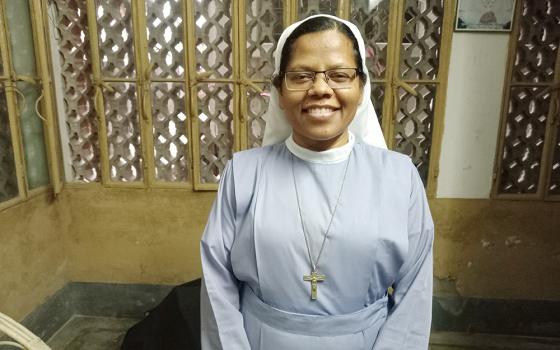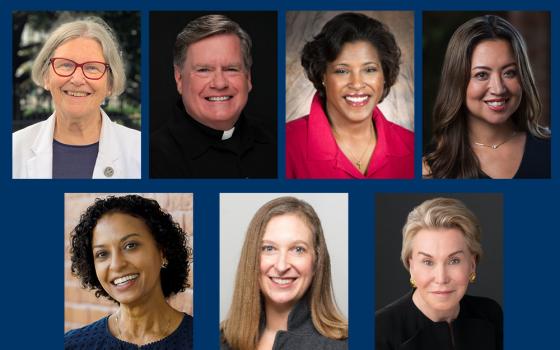Yesterday, I began examining the Boston College study on Hispanic ministry and parish life in the United States, focusing on the historical background to the survey. Today, let’s look at the survey data itself.
Many things jump out from the data, but if there is an overall theme, it is that parishes with Hispanic ministry are vibrant. For example, the report states:
On average, 1,419 parishioners attend weekend Masses at parishes with Hispanic ministry. This is about 22 percent higher than the average for all parishes nationally (1,110 parishioners). The median for Mass attendance on weekends in parishes with Hispanic ministry is 1,000 parishioners, compared to 750 in all parishes.10 About half (48 percent) of these parishioners attending Mass are Hispanic. In more than a third (34 percent) of these communities 1,400 parishioners or more attend on a typical October weekend. Twenty percent of parishes report a total of 344 parishioners or fewer attending weekend Mass regularly.
These higher rates of Mass attendance may have something to do with the concentration of the Hispanic population in urban and suburban areas. Rural parishes tend to be smaller and post lower numbers. But, there is a cart-horse quality to this observation: People who live in more densely populated areas may see the parish as a source of real community in a cultural milieu that is otherwise not conducive to an experience of community. The suburbs are not known for their community spirit, urban neighborhoods tend to experience greater social mobility and their populations are more transient. It is in small towns that community is a given, where one knows one’s neighbors from the town meeting or the Memorial Day parade and BBQ or a visit to the General Store. So, these higher rates of participation exist where they are needed.
63% of the parishes that have Hispanic ministry also report that there is more than one priest at the parish and one of those priests is likely to be Hispanic himself. Yet, staffing these parishes is a challenge because they tend to lack financial resources. The report notes:
On average, responding parishes receive $7,744 in weekly parish offertory collections (median of $5,000). This is 15.7 percent lower than the average $9,191 collected in all parishes nationally. On average, $1,502 of the weekly offertory in responding parishes comes from parishioners at Spanish language Masses (median of $840). Study findings reveal that the higher the percentage of Hispanic parishioners attending Mass in a parish the smaller the total of revenues and expenses.
There are likely two explanations for this lower rate of financial support from the parishioners. First, Hispanic Catholics as a group are less affluent than European Catholics, especially because immigrant Latinos often face dire economic challenges. (I am sure that similar disparities would have been discerned in Maryland in the mid-nineteenth century between the contributions at parishes that hosted some of Maryland’s old, wealthy planter class and those that served the needs of Irish immigrants along the wharves of Baltimore.) Second, in Latin America, parishes typically have alternate sources of income from longtime endowments and/or are served by a religious community that provides economic support for the parish. As well, the report notes that most ministers at parishes with Hispanic ministry acknowledge that more must be done to fully integrate the Hispanic community into the life of the parish. Most ministers reported that such integration was minimal. Here is a clear avenue for greater focus and effort.
Hispanic parishes are fertile ground for apostolic movements, especially the Charismatic Renewal movement: Fully one half of all parishes with Hispanic ministry reported hosting a Charismatic Renewal movement. Cursillo, the Knights of Columbus, and the Legion of Mary are present in a third of parishes, while groups like the Movimiento Familiar Christiano and Jovenes para Christo are represented in 13 percent of all parishes. These movements are conduits for a more intentional discipleship. The report states:
Two-thirds of parishes with Hispanic ministry say that at least one apostolic movement at their parish has prayer groups rooted in the movement’s particular spirituality. In 53 percent of parishes, apostolic movements form small faith communities. Forty-eight percent indicate apostolic movements choose their own catechetical materials. Fewer, 36 percent, say apostolic movements celebrate Mass on a regular basis inspired in their spirituality. In 34 percent of parishes a priest formed in the spirituality of an apostolic movement accompanies members on a regular basis. One in five indicates that a deacon formed in the spirituality of the movement does so. Fifteen percent of Hispanic ministers report vocations to the priesthood inspired by an apostolic movement. Nine percent indicate vocations to vowed religious life.
Most pastors know that most of the work of a parish is undertaken by a minority of parishioners, and that such groups of dedicated parishioners often have diverse spiritualities and varying levels of attachment to the life of the Church outside their movement. I know these movements make some people nervous but they are a sign of new life, and they are to be encouraged and, as the report states, they need to be better integrated into the life of the parish. “Ministry in these parochial communities will benefit significantly from partnering with the apostolic movements in them and their leaders to facilitate effective evangelizing initiatives among Hispanic Catholics. More attention is to be given to the integration of these groups into the larger ministerial strategies in the parish so they do not function as independent, perhaps isolated units,” the report states.
In a nutshell, this survey illustrates what many of us have long suspected: Parishes with Hispanic ministries are critical today to the communities they serve and will shape the future of the U.S. Catholic Church in ways large and small. It is interesting that the survey shows the Feast of Our Lady of Guadalupe is the second most well attended liturgical celebration after Holy Week, which was not the case in the Church in the U.S. thirty years ago! At a time when we think of the necessity of parish closings, we should instead be thinking of parish realignments to meet the needs of an increasingly diverse population.
Tomorrow, I will look at what the report tells us about Pastoral Leaders and Faith Formation in Hispanic parishes.
Read the full Boston College report.


